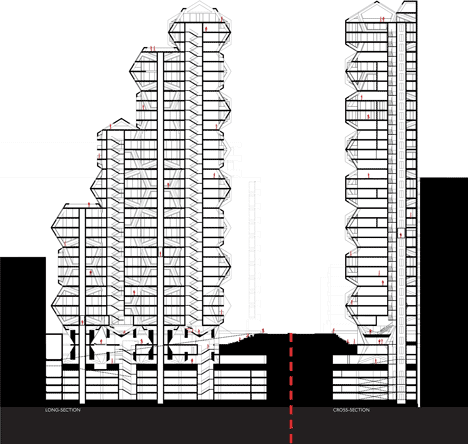Tammo Prinz's conceptual skyscraper would be built from tessellating modules
German studio Tammo Prinz Architects has developed a concept for a residential skyscraper built from a stack of modular cubes and dodecahedrons (+ slideshow).
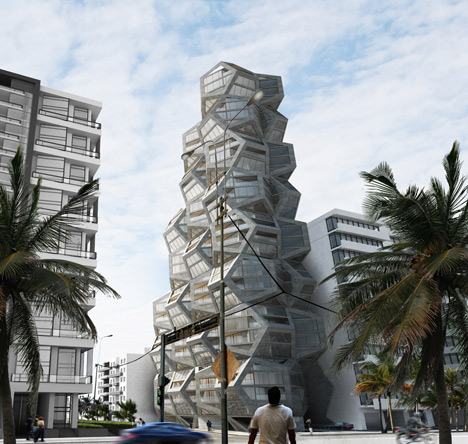
Tammo Prinz came up with the design as part of a competition entry for the redevelopment of a site in Lima, Peru, using a combination of three-dimensional shapes that tesselate with one another.
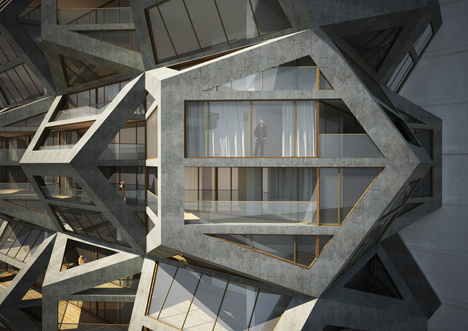
"Two of the five Platonian Bodies are chosen for their characteristics, that they perfectly fit into each other," said Prinz, explaining how he based his concept on elements of Euclidean geometry.
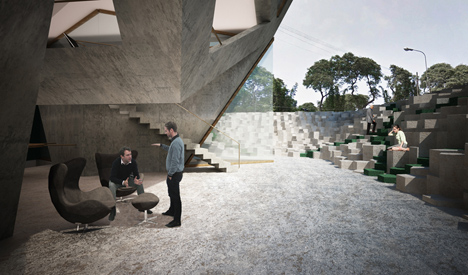
"This generates a space that clearly defines two qualities - one to be taken as inside space, the other as the potential additions," he continued. "The first - a perfect square - can easily handle the living functions, while the second can be either added to those or used as outside space."
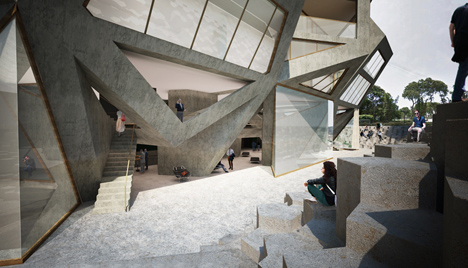
Prinz envisions a bulky concrete building that expresses its structure across its facade. Windows would cover the majority of surfaces, while balconies will be contained within the protruding geometries.
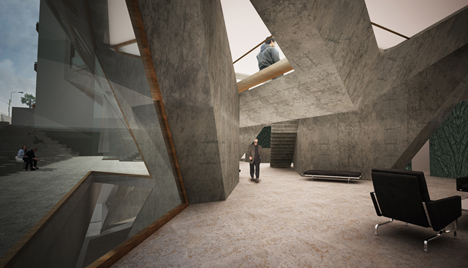
The architect told Dezeen he thinks the concept could be easily applied to other urban conditions: "Since it is developed from modules, you can expand in all three dimensions."
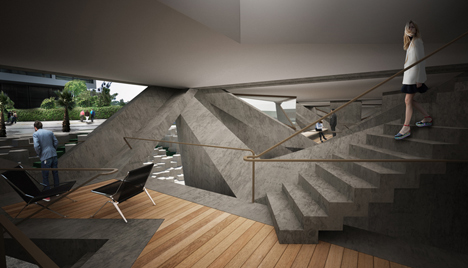
"At the one side we even worked with half modules, whose sliced flat sides attach to the neighbouring building," he said.
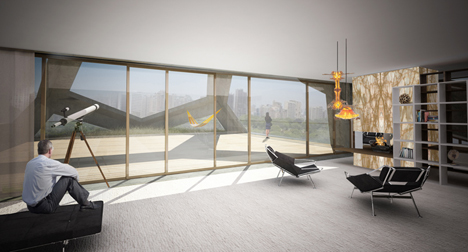
Here's a project description from Tammo Prinz Architects:
Housing Tower, Lima
Urban
The sloped maximum envelope was given by Peruvian building codes. The program was massive. Therefore a sunken outside plaza was introduced, connected to an open and public reception space, serving together as possible event space. This way the living function could reach down close to the ground floor, still providing enough privacy through the gap generated by the sunken plaza.
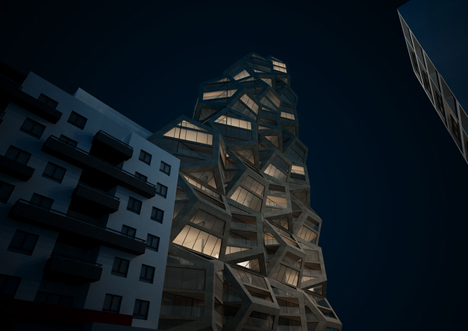
The sunken plaza is bordered by amphitheatre like steps, formed from Pentagon-shaped rocks (corresponding to the building). The random heights of the rocks/seats are traversed at several positions by steps of the same shape in different coloured stones, meandering through the rocks. All further common spaces are positioned underground exposed by natural light through generous voids into the reception space.
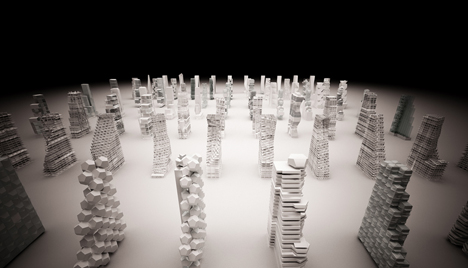
Platonian Bodies
Two of the five Platonian Bodies (cube and dodekaeder) are chosen for their characteristics, that they perfectly fit into each other. By this generating a space that clearly defines two qualities - one to be taken as inside space, the other as the potential additions.
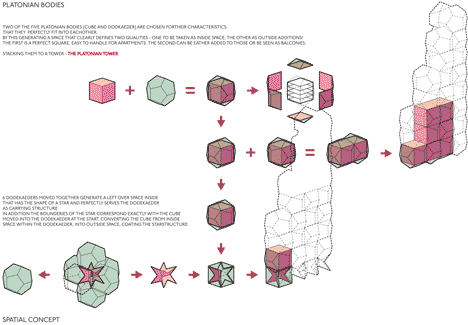
The first, a perfect square is easy to handle the living functions, the second can be ether added to those or be used as outside space. Stacking them to a tower - The Platonian Tower.
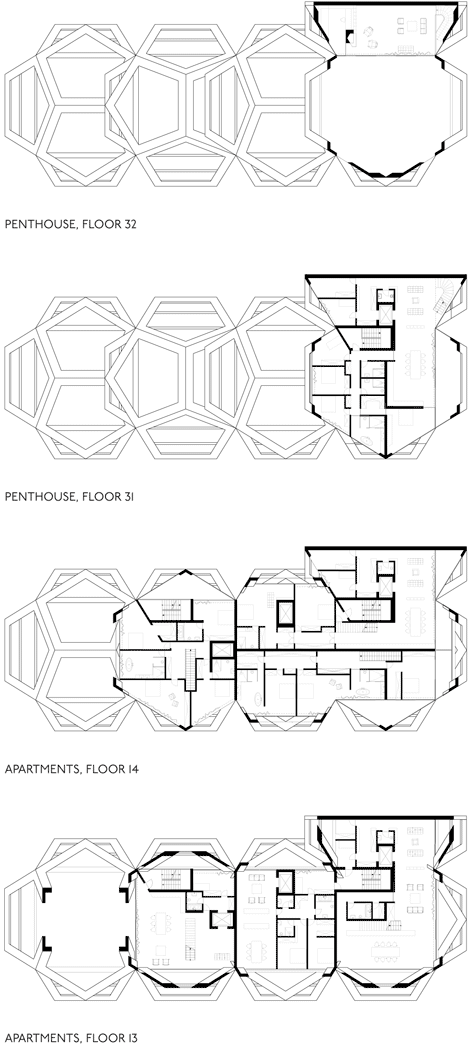
Structure Tower
The outlines of the dodekaeder serve as a massive concrete structure, giving total freedom to the inside. The buildings appearance is mostly defined by its brute concrete structure.
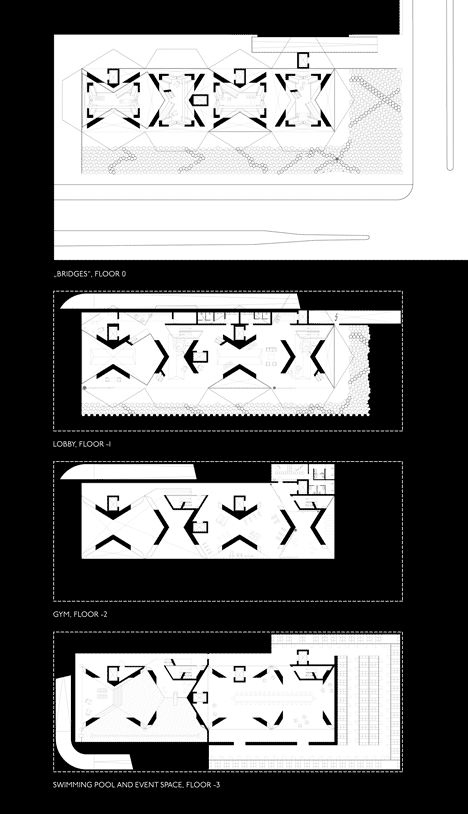
Base structure
Six dodekaeder moved together generate a left over space inside, that shapes a star and perfectly serves the dodekaeders of the tower as carrying base structure. In addition the boundaries of the star correspond exactly with cube moved into the dodekaederat the start, converting the cube from inside space within the dodekaeder, into outside space, coating the star structure.
